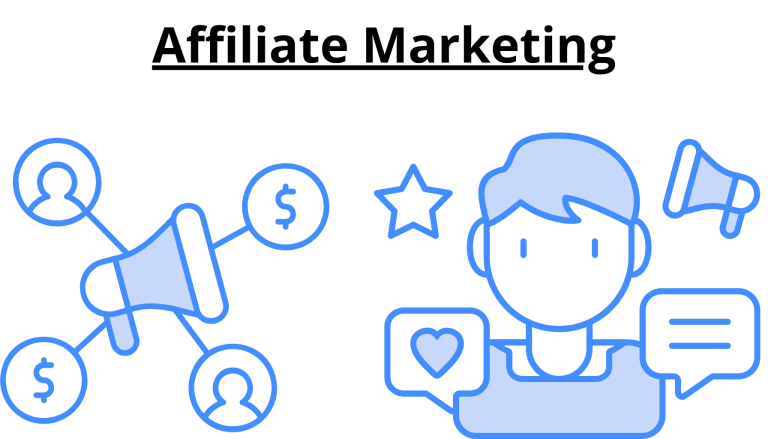Before you even start your business. You got to pick the right business model for you. Since everyone has their own taste and preference. Finding the right model will go a long way. So here is how to choose the right online business model.
Article Overview

My goal here is to guide you through this decision-making process. Your business model should be a reflection of your ambitions and capabilities. It needs to align with how you envision interacting with your customers and how you plan to generate revenue.
In the coming sections, I’ll walk you through a range of business models such as advertising, affiliate marketing, franchising, freemium, and several others, each with its own set of nuances and potential for success.
The information provided will arm you with the knowledge necessary to make the right choice for your business. Deciding what suits you best hinges on a deeper understanding of the market, customer needs, competition, and what you inherently bring to the table.
How To Choose The Right Online Business Model For You
When choosing the right online business model, it’s important to align your passions and skills with market needs. Look for a field you’re passionate about to ensure long-term engagement and satisfaction. Assess your strengths, whether in programming, sports, or other areas, and identify how these can meet a market demand.
When I think about venturing into the unknown territories of online business, I consider who I am first and foremost. My interests, skill set, and long-term goals are the backbone of any business decision I make. When you embark on this self-discovery, you ensure that your chosen business model aligns not just with market demand but with your personal aspirations.

What comes next is understanding the various online business models available. The franchising model, for starters, allows you to use a recognized brand’s name and business system. It’s a great fit if you’re looking for an established playbook to run your business but requires significant investment and commitment to specific franchisor guidelines.
The Freemium Model
Ever heard of the freemium model? It’s the go-to for many tech companies, providing basic services for free while charging for premium features. If you’re tech-savvy and have a service that can scale efficiently, this could be a perfect match.
The Razor and reverse razor blade model
Then there’s the razor and reverse razor blade model, which requires selling a primary product at a low margin or loss (the ‘razor’) and generating profits from associated consumables (the ‘blade’). It’s an excellent strategy if you can guarantee repeat sales of profitable items or services. However, this model often depends on high volume sales to be effective.
The subscription services Module
Compare that with subscription services, which promise consistent revenue through ongoing payments. This model is golden for building a loyal customer base. For those with a knack for strong customer relationships and long-term service provision, this model can’t be ignored.
The Agency Model
Moreover, if you have a talent for specialized services and project-based work, the agency model might be your route. On the digital platform, agencies can thrive with lower overhead and a global client base, but this model demands excellent portfolio work and continuous client acquisition.
E-commerce
Lastly, we have e-commerce, the powerhouse of online business. Whether it’s building your brand or leveraging platforms like Amazon, e-commerce offers substantial flexibility but requires a firm grasp on logistics, marketing, and customer service. Shopify is a great platform where you can get started with e-commerece.
Now that you have a foundational understanding of these models, it’s time to steer towards identifying your niche, which is what I’ll discuss next.
Identifying Your Niche: Starting with Market Demand
Before I select an online business model, I always start by understanding WHERE the demand lies. It’s a fundamental step that you shouldn’t overlook. After all, a business without a market is like a ship without a sea.

I consider the target audience and their needs central to my decision-making process. Sometimes, this means conducting surveys, researching online forums, and analyzing search engine trends to gather insights into what people are looking for.
A practical approach involves analyzing market trends. Getting a grip on what’s gaining popularity can reveal profitable niches. Tools like Google Trends can be quite revealing in this aspect, helping me to see a high-level view of consumer interest over time.
Finally, the efficiency of the business model I choose is often shaped by the niche I target. For instance, certain niches respond better to subscription models, while others are more suited to e-commerce or affiliate marketing. By matching the expectations and behavior patterns of my niche market with the right business model, I ensure a greater chance of success.
Evaluating Market Potential and Competition
Before you choose an online business model, you must size up the market and the competition you’ll face. A thorough market analysis will provide crucial insights into whether there’s a profitable opportunity for your proposed venture.

First, let’s discuss market potential. It’s essential to understand the scope of your market. What’s the demand for the product or service you want to offer? Are people searching for solutions that you can provide? Use tools like Google Trends, market research reports, and social media analysis to gauge interest and demand levels. These tools can shed light on how many people are interested in your offering and whether that interest is growing or waning.
Now, considering the competition is equally vital. Start with a simple online search to see who else is addressing similar customer needs. Identifying who your competitors are, understanding their business models, and analyzing their strengths and weaknesses can help inform your strategy.
Creating a SWOT analysis (Strengths, Weaknesses, Opportunities, Threats) for your potential venture will also aid in understanding where you can stand out. Perhaps your competitors are missing a key feature or service that your audience craves, which you could capitalize on.
One common mistake I see is failing to consider indirect competition. While direct competitors offer the same products or services, indirect competitors satisfy the same customer need in a different way. For example, if you want to start a subscription service for book summaries, your direct competitors are other summary services. However, your indirect competitors include actual books, audiobooks, podcasts, and even video content creators. Recognizing this wider competition field is CRUCIAL.
Lastly, do not underestimate the value of customer reviews and feedback on your competitors. This can reveal gaps in the market that you might exploit. It’s about listening to the market and turning what you hear into a strategy that sets you apart.
Moving forward, we will delve into crafting your Unique Value Proposition which is, frankly, the bedrock of any successful business. Your ability to communicate your brand’s unique value effectively will be a game-changer.
Your Unique Value Proposition: The Bedrock of Business Success
In the sea of online enterprises, your unique value proposition (UVP) is your beacon, signaling what makes your business stand out. It explains why customers should choose you over countless other options. Crafting an effective UVP requires a deep understanding of what you offer that no one else does, or how you do it better.

Beyond mere products or services, your UVP might hinge on bespoke customer experiences, unparalleled product quality, innovative technology, or even your brand’s ethical stance. This UVP doesn’t have to be complex, but it must be clear, compelling, and communicated consistently across all channels.
Your business model should be a reflection of your UVP, not the other way around. Whether you opt for a subscription service that promises convenience, or an e-commerce platform that offers a unique selection, your model should bolster what makes your offer unique.
Take, for instance, a company leveraging a freemium model. Their UVP could be the freedom to explore basic services at no cost, cultivating trust and reliability which, in turn, encourages users to upgrade for premium features. This directly integrates the UVP into the user experience and the business model itself.
Ultimately, your UVP is not just a message for marketing materials; it’s the core of your strategic planning. It should guide every decision – from the user interface design of your website to the customer service protocols you establish. Consistency here breeds recognition, trust, and loyalty from your customers.
I’ll guide you to weave your UVP into the fabric of your business model in the following section. Remember, the perfect alignment between your unique value and your business structure is pivotal for long-term success.
Strategic Revenue Streams: Crucial for Longevity
Your business isn’t just a reflection of your passions and skills; it’s also a vehicle for generating revenue. Understanding the revenue streams associated with different online business models is critical. Let’s take advertising and affiliate marketing, for example. These models work well for those with solid content and high traffic, typically generating revenue through clicks and referrals.

Diversification is key. You shouldn’t rely on a single source of income. Why not combine a subscription-based model with some affiliate marketing? This could offer your business a cushion against fluctuations in one area.
But remember, all revenue streams aren’t suitable for every business. Your choice should align with your capabilities, market demand, and customer preferences. It’s wise to ask: ‘Will my customers find value in this, or will it push them away?’
Incorporating multiple revenue streams can be a balancing act. It requires careful planning, a deep understanding of your target market, and an adaptable strategy. As you grow, be prepared to tweak or even overhaul your revenue models to stay in sync with your evolving customer base and market dynamics.
Considering Multi-Revenue Streams and Adaptability
Your business model isn’t etched in stone. I understand the excitement of launching with a strong, well-thought-out plan, but the digital marketplace is dynamic. This means your chosen model should be flexible to adapt and evolve.

Think about including multiple revenue streams. This not only cushions your business against market volatility, but it also opens up avenues for growth that you might not have initially considered.
Incorporate scalability into your model from the outset. For example, if you start with a subscription model, is there room to introduce premium tiers or complementary products later?
Keep an eye on industry trends and customer feedback. Their importance cannot be overstated—they’re often the first indicators that you may need to pivot your strategy.
Experimentation is key. Don’t hesitate to test different approaches within your model. A/B testing, customer surveys, and market analysis can provide invaluable insights that guide your adaptability.
Bear in mind, success in online business often requires you to be as nimble as you are resolute. Be prepared to fine-tune or even overhaul your business model in response to new technologies, market expectations, or changes in consumer behavior.
FAQ Section: Choosing the Right Online Business Model
Let’s answer some very common question around choosing the right online business moduel.
1. How do I choose an online business model?
To choose an online business model, assess your skills, interests, and market demand. Research various models, understand your target audience, and consider the resources you have. It’s essential to align the model with your goals and capabilities.
2. How will you determine that a certain business model is right?
A business model is right if it aligns with your goals, skill set, and market needs. It should be scalable, profitable, and sustainable. Test the model with a small investment first to gauge its viability before fully committing.
3. How do I choose a good business model?
Choosing a good business model involves understanding market trends, identifying customer needs, and assessing your strengths. Look for a model that offers growth potential and aligns with your business vision and values.
4. What are the 4 types of business models?
The four common types of business models are e-commerce, subscription, freemium, and affiliate marketing. Each has unique advantages and suits different products and services.
5. What is the easiest online business model?
The easiest online business model often depends on your skills and resources. Dropshipping and affiliate marketing are considered relatively easy to start due to low upfront costs and minimal inventory management.
6. What is the most successful e-commerce business model?
The most successful e-commerce business model varies based on market trends and consumer behavior. However, direct-to-consumer (DTC) and B2B e-commerce models have shown significant success due to their direct engagement with customers and businesses.
7. What is the easiest business model to start?
The easiest business model to start is typically one that requires low initial investment and simple operations. Examples include service-based businesses, dropshipping, and digital product sales.
Choosing the right online business model is an important step towards entrepreneurial success. We hope these answers provide clarity and guidance as you embark on your online business journey. If you have any further questions or need more specific advice, feel free to comment below. We’re here to help!






